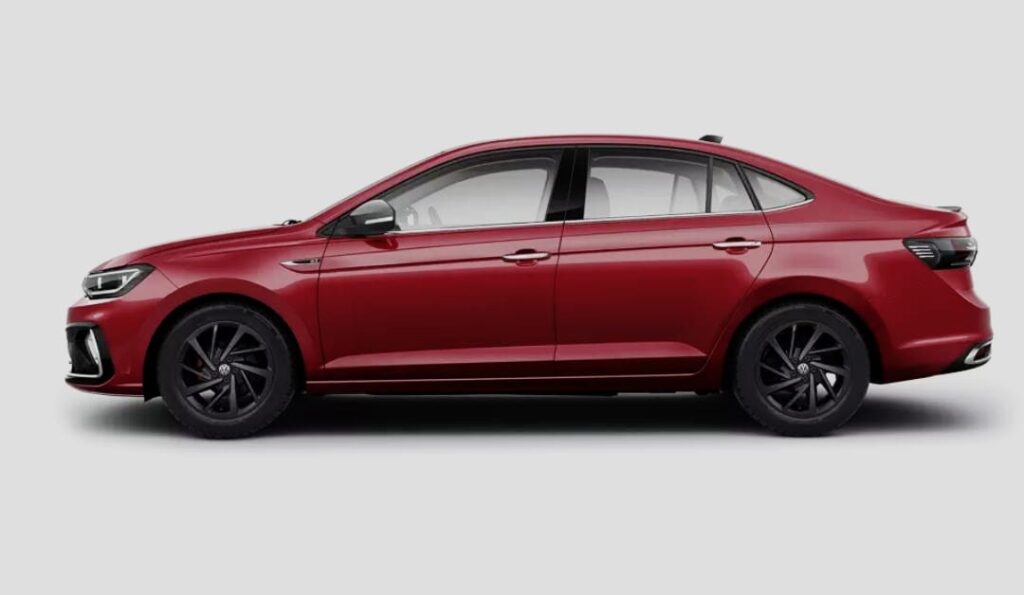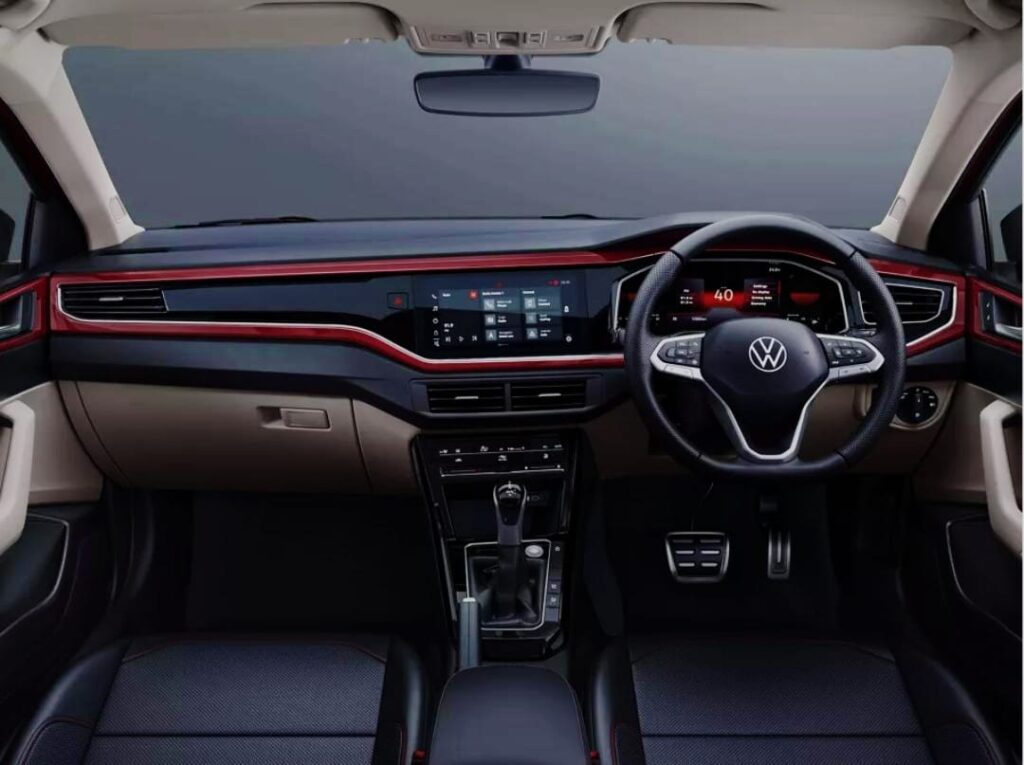There was a time when the Honda City was the largest car in the midsize sedan segment. But times have changed because Volkswagen has unveiled the largest car ever built in the segment, the Virtus sedan. Recently, Volkswagen unveiled the new Virtus ahead of its May 2022 launch in India. VW’s Virtus sedan replaces its ageing Vento sedan in the Indian lineup, and it will compete in the midsize sedan segment.
The Volkswagen Virtus is expected to cost between Rs 10.50 lakh and Rs 17 lakh (ex-showroom), and it will compete with its Skoda sibling, the Slavia, as well as the Honda City, Hyundai Verna, and Maruti Suzuki Ciaz. Let’s see who comes out on top in the battle between Virtus and City.
Volkswagen Virtus vs Honda City: Dimensions


| Volkswagen Virtus | Honda City | |
| Length | 4561mm | 4549mm |
| Width | 1752mm | 1748mm |
| Height | 1507mm | 1489mm |
| Wheelbase | 2651mm | 2600mm |
| Boot space | 521 litres | 506 litres |
The above table clearly shows that the Volkswagen Virtus is a larger sedan than the Honda City in every way, including length, width, height, and wheelbase. Not only that, but the VW Virtus sedan is longer than its Skoda Slavia sibling, despite sharing the same MQB A0-IN platform.
So basically, the Virtus is the segment’s longest car. Even when we compare the boot space of the Virtus and the city, we can clearly see from the table above that the VW Virtus has more boot space than the Honda city.
Volkswagen Virtus vs Honda City: Features

In terms of features, the Volkswagen Virtus has a slight advantage because it is newer and offers features such as a fully digital instrument cluster, Active Cylinder Technology, idle start-stop and a few others. It also has features that many of us would want, such as led headlights, beautiful alloy wheels, electrically folding ORVMs, an engine start-stop button, keyless entry, a large sunroof, 6 airbags, and so on.

The 5th generation Honda City is also not far away and comes with its own set of unique features such as Lane Watch Camera, Agile Handling Assist (AHA), and a few others. It includes features like an 8-inch touchscreen infotainment unit with Apple CarPlay and Android Auto, Cruise Control, rain-sensing wipers, climate control with pollen filters, ambient lighting, rear AC vents, keyless entry, an electric sunroof, and many more.
Both cars have great features, but their fans prefer them because of their incredible engine performance, so let’s talk about that.
Volkswagen Virtus vs Honda City: Engine Specs
| Volkswagen Virtus | Honda City | |
| Type | 3 cylinders Turbo-petrol/4 Cylinders turbo-petrol | 4 Cylinders, naturally aspirated(VTEC) |
| Displacement | 999cc/1498cc | 1462 cc |
| Power | 115hp/150hp | 121hp |
| Torque | 175Nm/250Nm | 145Nm |
| Manual gearbox | 6-speed | 6-speed |
| Auto gearbox | 6-speed Torque converter/7-speed dual-clutch | 7-step CVT |
Both cars have different engine options, but because the Virtus is a petrol-only model, comparing it to the Honda City’s diesel engine is unfair. So let’s talk about the petrol engines in both cars.
Volkswagen Virtus comes with two turbo-petrol engine options, which is also available on the Skoda Slavia. The Virtus Dynamic Line variant offers a 1.0-litre, three-cylinder turbo-petrol engine that produces 115 hp and 175 Nm mated to a six-speed manual transmission or torque converter automatic transmission.
The Performance Line variants of the Virtus come with a larger 1.5-litre, four-cylinder TSI engine rated at 150hp and 250Nm. Due to this engine, the Virtus ranks among the most powerful midsize sedans on the market, along with the Slavia, thanks to the variable vane geometry turbocharger, which produces more torque over a wider range of engine speeds. The engine is also available with a seven-speed DSG transmission. Idle Stop/Start technology is standard on both models, whether manual or automatic transmission.
This engine also features active cylinder technology (ACT). When the engine load is low, ACT automatically shuts down two cylinders, further reducing fuel consumption and CO2 emissions.
The Honda City, on the other hand, has only one petrol engine, and it is naturally aspirated. However, don’t think that this is an ordinary engine because it is the iconic VTECH engine. Honda City’s 121hp, 1.5-litre naturally aspirated engine is available with either a 6-speed manual or a 7-step CVT automatic transmission.
Volkswagen Virtus vs Honda City: Verdict
There is no doubt that the VW Virtus has everything a successful car should have, whether it is a feature, practicality, looks, or performance. So you’ll have to make a compelling case to avoid this sedan.
However, sales may be limited due to a few features, such as a diesel engine option. This advantage is provided by Honda City, which offers diesel engines in addition to gasoline engines. While there is no doubt that the TSI engines available in Virtus are superior in terms of performance, the lack of diesel may turn off many customers.

